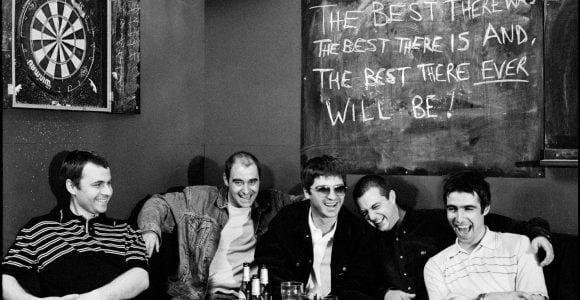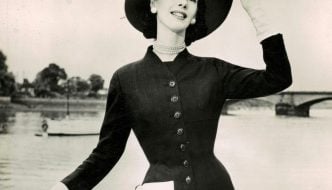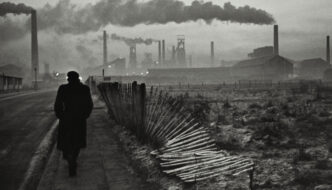
‘A Pub Near Abbey Road, London, UK’ 1996
As someone who lives in Manchester, one thing I would consider a certainty is the pride the city has for its musical history. In the summer of 2016, mysterious painted lemons decorated the city centre in anticipation of the release of new music by The Stone Roses. You’ll walk past any bar in the Northern Quarter and hear the guitar riffs of New Order’s Blue Monday, a record shop and it’ll be the dulcet tones of Morrissey. Mancunians such as The Smiths, The Stone Roses, Joy Division, and New Order splashed life into the global music scene with their northern charm. But the 90s saw one band in particular pave the way for English rock to become world famous: Oasis, just five boys from Manchester with some memorable haircuts.
The British photographer Jill Furmanovsky followed the band for a number of years during their success in the music industry, photographing them along the way. The exhibit, now showing at Manchester’s Central Library entitled Oasis: DNA allows us to experience the mish-mash of time, places, experiences, people and chance that comes with the lives of the famous rock musicians: the crowds of thousands, laughs in the pub, quiet moments of contemplation, as well as the struggle the Gallagher brothers felt, for each other, as well as for the band itself.
What I most enjoyed about the exhibit wasn’t the highs or the lows the photographs captured. It was the bits in between that I found most intriguing. The photo ‘Music Ground’ (2001) situates Noel in an unnamed guitar shop in Leeds. The caption of the photo reveals how the musician was humbled at the thought of having the money to buy a guitar whenever he wanted, as it was not always like that. The success, the money, the drugs, and the crowds of thousands screaming lyrics they wrote never seem to overshadow Noel’s reflection on his roots, and his thankfulness for how far he, and the band have come. Performing in front of a crowd of two thousand at a venue he and his friends used to frequent when they were kids, as shown in the photo ‘Maine Road’ (1996), was a key moment in the band’s and the brother’s identities. But for me, it is the quiet moments that tie the collection together.
The series is mostly in black and white. The occasional bursts of reds and blues in the photos for me were like spurts of the euphoria that is associated with rock and roll life: intense, exciting, but ultimately short-lived. The black and white encapsulates what the collection is all about: the mundanities, the every-day, the backstage, the pub-life, the grins and the grimaces of the boys who didn’t change in the face of success, who still had those same haircuts, and that same brown coat.
What the exhibit tells us most is that there’s a story behind everything, that there is much more going on than just what you’ll learn from a press release or a magazine interview. What’s apparent to me is that Furmanovsky collected more stories and exchanges in her photos from Noel than his brother Liam. Liam’s separation from the project is a story in itself perhaps, captured through Noel’s perspectives of the fights and tensions between the two, as well as Liam’s drug abuse. ‘A Pub Near Abbey Road’ (1996) finds the brothers on good terms after a tense few weeks between the two, nicely presenting a tranquil moment for the band.
With all of the small details captured it feels like there are untold stories unfolding in the photos. The real joking, clumsy and fun moments, the tired, strung out mornings, the euphoric nights, all of them compiled to tell a story. The shots that seem off-guard are more emotive than the posed stern nature of the band in official shoots. Furmanovsky allows her audience to be witness to the happenings of these scruffy boys from Manchester, having the time of their lives, growing into some slightly older scruffy boys with a bit longer hair, still having the time of their lives. But, you know, all the other times as well.
Filed under: Art & Photography
Tagged with: Jill Furmanovsky, Manchester Central Library, Manchester music, music journalism, music photography, Noel Gallagher, Oasis, photo journalism, photography



Comments